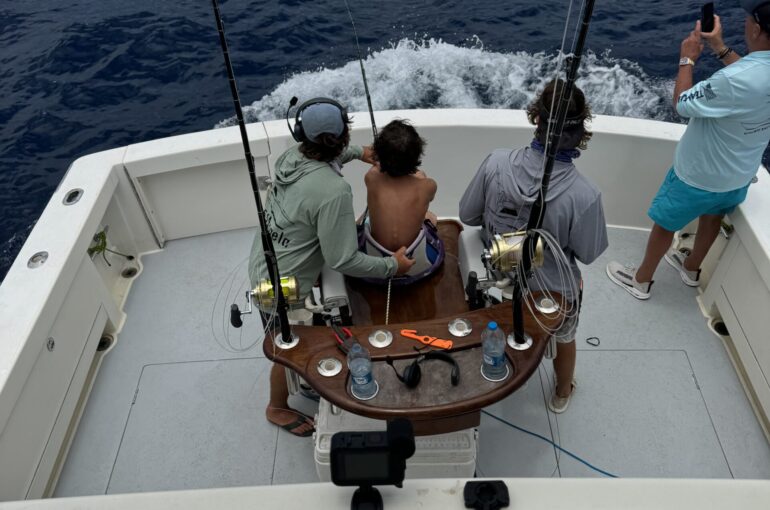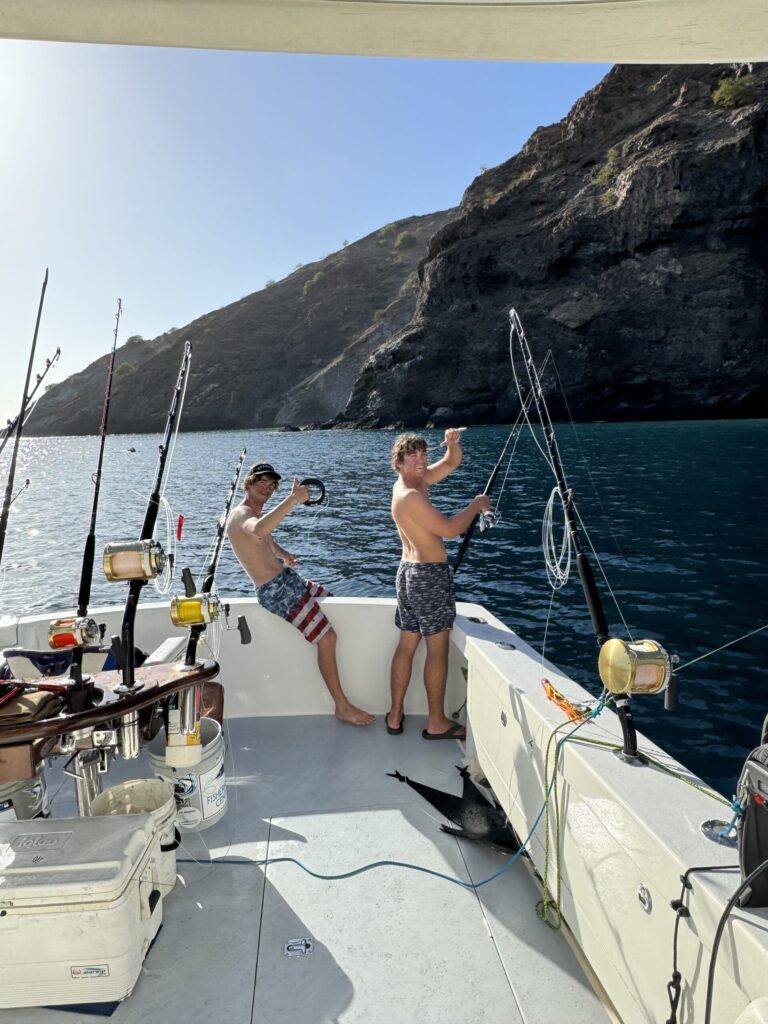Marlin Fishing Tips

Marlin Fishing Tips
Marlin fishing is one of the sport fishing world’s most thrilling and rewarding challenges. These powerful and majestic fish are known for their size, speed, and spectacular aerial displays. Anglers who pursue marlin know that success requires more than luck it’s a test of skill, timing, and knowledge. Whether heading to Cape Verde, one of the world’s best destinations for blue marlin, or planning a trip elsewhere, understanding the right strategies makes all the difference. These marlin fishing tips are essential for any serious angler looking to increase their chances of a memorable catch.
Marlins are not easy targets. They roam vast stretches of open ocean, feeding on baitfish and moving with the currents. Hooking one can take hours or even days of patience, and landing requires strong gear, expert teamwork, and a sharp understanding of how marlin behave during a fight. But when it all comes together, there’s nothing quite like seeing a massive marlin launch out of the water and realizing you’re connected to one of the sea’s most iconic predators.
Understand the Marlin’s Behavior Before You Start
Before setting foot on a boat, it’s helpful to understand how marlin behave. These fish are solitary or travel in small groups, and they’re constantly on the move in search of food. They feed on mackerel, squid, flying fish, and small tuna, and they tend to follow warm ocean currents where bait is plentiful. In places like Cape Verde, marlin are drawn to the upwellings near the island slopes, where deep water meets steep underwater features.
Marlins are ambush predators, using their speed and powerful bills to slash at schools of fish before circling back to feed on the wounded. This aggressive feeding style is one of the reasons they respond so well to trolling with artificial lures. When they commit to a strike, they hit with force and rarely nibble. Knowing this helps anglers prepare for sudden strikes and fast runs. Patience is key, but the action is immediate and explosive when a marlin decides to bite.

Choose the Right Tackle for the Job
One of the most critical marlin fishing tips is to match your tackle to the size of your target fish. Heavy-duty trolling gear is a must for blue marlin, especially those in Cape Verde, which often exceed 500 pounds. Rods should be strong and flexible, usually rated for 50 to 130 pounds. Reels must have high line capacity, strong drag systems, and smooth performance under pressure. A good lever drag reel with a two-speed feature lets you control the fight during high-speed runs and slow grinds.
Your line and leader setup should be equally robust. Monofilament main lines in the 80 to 130-pound range are standard, often paired with wind-on leaders and heavy-duty swivels. Lures should be large and built for big water skirted trolling lures with flashy colors and aggressive action usually get the best results. In many cases, boats like Miss Angela spread multiple lures in the wake, creating a “bait school” effect that draws in hungry marlin.
Beyond gear, always check your knots, crimps, and connections before every trip. A single weak point can cost you the fish of a lifetime.
Master the Art of Trolling
Trolling is the go-to technique for marlin fishing, especially in bluewater locations like Cape Verde. But trolling is more than dragging lures behind a boat; it’s a science of speed, placement, and action. One of the most essential marlin fishing tips is to vary your spread and monitor how the lures run in the water. Each position in the spread long rigger, short rigger, flat line, and shotgun plays a specific role. Some lures are meant to splash and pop, while others dive and swim deeper.
The key to successful trolling is consistency and awareness. Keep the boat moving at the right speed, usually around 7 to 9 knots, and make sure the lures are working correctly. Watch for signs of baitfish, birds, or current lines all indicators that marlin could be nearby. Don’t hesitate to switch out lures if conditions change. Dark lures may work better in cloudy water, while bright colors can stand out in clear, sunny seas.
Some of the most successful marlin fishing adventures involve constant adjustment. A good captain always observes the wake, changes the spread, and stays boats to track where fish are being raised.
Learn to Read the Signs of the Ocean
One of the most underrated marlin fishing tips is learning to read the ocean. The best marlin anglers don’t just watch their rods, they study the water around them. Birds working the surface, flying fish breaking the water, changes in color, or subtle ripples can all indicate the presence of bait and predators.
In Cape Verde, for example, marlin often show up behind the boat before they strike. They may follow a lure for several seconds or swipe at it with their bill. That’s why crews keep their eyes on the spread constantly. When a fish is raised, the goal is to tease it into committing to a strike. Switching to live bait or changing lure positions sometimes helps seal the deal.
Current edges, temperature breaks, and underwater structures also play a significant role. Fish are more likely to feed when conditions push bait into concentrated areas. Using onboard electronics like sonar and temperature gauges can help pinpoint these zones. The more time you spend studying patterns and responses, the better your intuition becomes and that often makes the difference between a quiet day and a successful hookup.
Stay Focused During the Fight
Hooking a marlin is only the beginning. The real test comes during the fight. These fish are powerful and intelligent, capable of long runs, deep dives, and high leaps. Once the reel starts screaming, the angler must react quickly and get into position. Use a fighting belt or harness to transfer pressure from your arms to your body, and keep a steady rhythm as you pump and reel.
One of the most useful marlin fishing tips during a battle is to keep pressure on the fish at all times. If the line slips, the marlin can shake the hook or dive under the boat. Communication with the crew is essential. The captain may maneuver the boat to help reduce tension or bring the fish back into position. Deckhands assist with drag settings, line management, and calling out what the fish is doing.
As the fish tires, it may begin circling beneath the boat. This is when patience pays off. Stay steady, don’t rush the final moments, and let the crew handle the leader and gaff or release when it’s time. Whether you land the fish or release it at the boat, the satisfaction of the fight is unmatched.
Practice Ethical Fishing and Respect the Ocean
Marlins are magnificent creatures, and treating them with respect is essential. Many fishing operators in Cape Verde practice catch and release, especially for large females that play a key role in the breeding population. If you plan to release a marlin, inform the crew in advance so they can rig appropriately.
One of the most essential tips for marlin fishing today is to support sustainable practices. Use circle hooks where possible, fight fish efficiently to reduce exhaustion, and handle them gently at the boat. Taking a few extra seconds to revive a marlin before releasing it can make a big difference in its survival.
If you choose to keep a fish, ensure it’s within legal limits and the meat is used responsibly. Many boats will clean and store your catch or help you donate it locally. The goal is always to enjoy the adventure while protecting the ocean for future anglers.
Final Thought: Marlin Fishing Tips
Marlin fishing is more than a hobby it’s a pursuit that blends skill, adventure, and respect for the sea. Whether you’re chasing your first marlin or working toward a grander goal, these marlin fishing tips will help improve your chances and deepen your understanding of the sport. Every decision plays a role in your success, from gear selection to fight technique.
Fishing in places like Cape Verde, where the conditions are ideal and the fish are abundant, gives you a real opportunity to implement these tips. Boats like Miss Angela, operated by skilled crews, offer the perfect platform for unforgettable battles and memories.
In the end, marlin fishing is not just about the catch the chase, the ocean, and the stories that live on after the hook is set. Every time you head offshore, the possibility of something incredible waits just beneath the surface.


